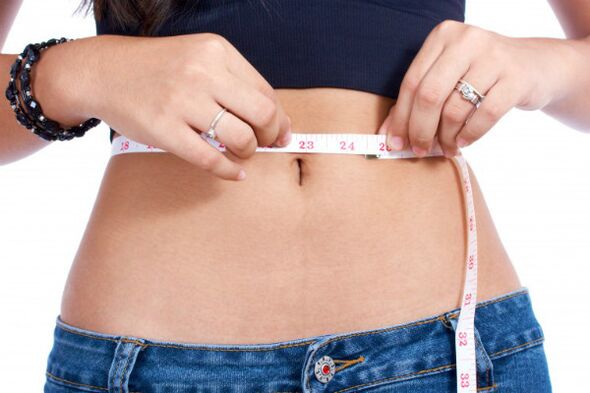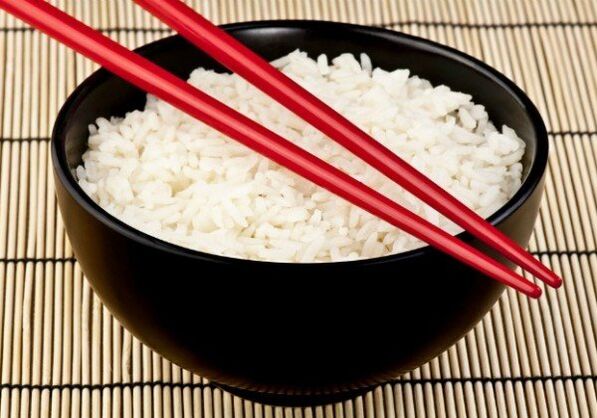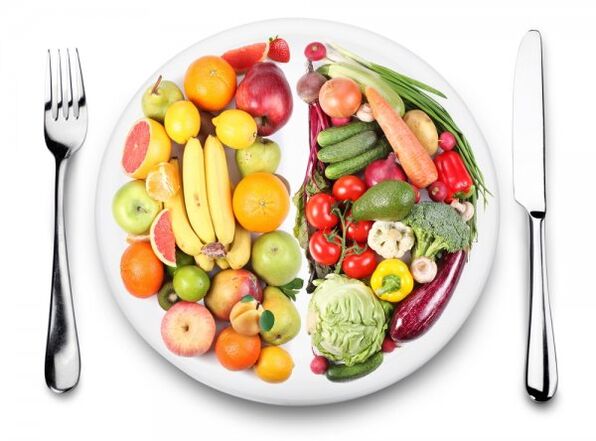The rapidly growing popularity of the Japanese 7-Day Salt-Free Diet for Weight Loss is attracting the attention of an increasing number of modern women. The proposed article on a similar nutritional principle will help develop a menu and get amazing results. In the land of the rising sun, one rarely sees a woman with curvy shapes. What is the secret of Japanese women? Climatic conditions, genetic factors or is the secret in the special features of Japanese cuisine? Most importantly, can European women achieve such a result? Why not. You just need to use the developed Japanese diet for 7 days. But before plunging into "oriental weight loss", you need to get to know him better and find out what the principles of such a diet are, how they are applicable to our country, what are the advantages, disadvantages and contraindications of this type of diet, weight loss.

Basic Principles of "Japanese Weight Loss"
The reason for the popularity of the Japanese weight loss diet is the fact that the Japanese are considered to be the healthiest nation in the world. This is stubbornly evidenced by the fact that in this country the largest percentage of centenarians, overweight and obese are foreign to the population. In addition, according to statistics, the Japanese rarely get diseases of the cardiovascular system, and their intellectual potential has long been envied by the whole world. In addition, the Japanese lead an active lifestyle, go for walks, ride bicycles. Let us consider the basic principles of "Japanese weight loss" and understand the mechanism by which it works.
All of this data interested doctors and nutritionists and encouraged them to study the Japanese food system. Analyzing nutrition using this method, nutritionists agreed that the duration of the Japanese diet should be 14 days to get results. At the same time, the menu is calculated for a week, provided that the diet can be resumed from the eighth day. Thus, the basic principles of the Japanese diet for weight loss for 7 days were derived.

- For effective weight loss, eat foods in small portions. The Japanese diet is focused on results and therefore against overeating. For this reason, it is customary in Japan to eat with special chopsticks that allow you to ingest the food slowly and without rushing. And the slower a person eats, the faster the feeling of hunger goes away.
- During the Japanese salt-free diet, the use of sugar, salt, spices of any kind is prohibited.
- Sweets and baked goods should be excluded from the diet. Instead of bread, you need to eat rice. It is the staple food of the Japanese, much healthier than bread products, which are high in sugar and starch.
- It is necessary to pay attention to the quality of food and preserve the beneficial properties of the products when cooking. In Japan "overcooked" food is not eaten and all dishes are cooked mildly. You also have to forego fatty "heavy" sauces and replace them with broths.
- Of drinks, preference should be given to green tea and clean water, the volume of which should be at least one and a half liters per day.

How does the Japanese diet work?
Despite the fact that the Japanese diet is considered by many to be unsafe, rigid and ineffective for 7 days, its popularity is constantly growing. This is because there are more and more people who want to lose those excess pounds quickly in a short period of time. Let's see how the Japanese diet works and what safety principles should be followed. The secret behind the amazing results of the Japanese diet is that people eat foods high in protein and carbohydrates for seven or fourteen days and skip all fatty foods. This will reduce the daily caloric intake necessary for a normal life.
The fact is that a person sitting on a diet tries to significantly reduce the amount of food consumed. However, the habit of eating a lot and satisfactorily has a negative effect on the sharp change in diet, the body experiences stress, which does not allow to protect the body from the constant feeling of hunger. The Japanese diet for 7 days guarantees a permanent result, since the dishes included in the list of allowed dishes are very satisfactory, being rich in proteins and proteins. A small portion is enough to satisfy hunger and recharge your batteries, but at the same time, no additional calories are absorbed when losing weight.
Japanese diet menu for 7 days: what and how to eat
For a balanced Japanese diet, it is important to include the right foods in your diet. Important components of the Japanese diet are seafood, rice, vegetables and fruits (excluding bananas and grapes), boiled meat, eggs, olive oil, fermented milk and soy products. The menu of the Japanese diet for 7 days in its approximate version is further presented on this page. It says how and what you can basically eat and what should be thrown away.
In order for the result of the diet not to be long in coming, you need to eat in small portions and drink enough water to remove toxins from the body.
For the sake of simplicity, it is recommended to create a weekly Japanese diet menu and strictly adhere to such a nutritional system. Experienced weight loss practitioners advise buying everything you need to prepare meals before starting to lose weight so that you don't have to go to the store later and be tempted by prohibited products. A sample menu for 7 days for the Japanese Diet is shown below.
The Japanese salt-free diet is very tough and complex. In order to endure it more easily, it is necessary to approach the desired goal with an open mind. Every morning on an empty stomach, drink a glass of water with a little lemon juice (about one tablespoon per glass). This promotes the excretion of toxins and toxins from the body, improves metabolic processes.

The first day
- Breakfast: green tea or coffee, drinks should be drunk without added sugar and / or milk;
- Lunch: 2 boiled chicken eggs, coleslaw or cabbage without meat stewed in a tomato, a glass of tomato juice without added salt;
- Dinner: 200 grams of cooked or steamed fish.
Second day
- Breakfast: a small piece of black or rye bread, you can take bran bread, coffee with no added sugar and milk;
- Lunch: 200 grams of boiled fish, coleslaw with olive oil, a glass of tomato juice without added salt;
- Dinner: 100 grams of boiled meat and a glass of kefir.
Day three
- Breakfast: coffee without sugar and milk, biscuits (2-3 pieces);
- Lunch: fried vegetables in vegetable oil (except potatoes);
- Dinner: 200 grams of boiled meat, coleslaw, 2 hard-boiled eggs.
Day four
- Breakfast: 100 grams of steamed vegetables, coffee without sugar and milk;
- Lunch: 200 grams of boiled fish, a glass of tomato juice with no added salt;
- Dinner: 200 grams of fruits other than bananas and grapes.
Day 5
- Breakfast: 100 grams of steamed vegetables, coffee without sugar and milk;
- Lunch: 200 grams of boiled lean meat, a glass of tomato juice with no added salt;
- Dinner: 200 grams of fruits other than bananas and grapes.
Day six
- Breakfast: coffee without sugar and milk;
- Lunch: unsalted chicken (300 grams), coleslaw with vegetable oil, a glass of kefir;
- Dinner: 2 hard-boiled eggs, 200 grams of steamed vegetables (excluding potatoes).
Seventh day
- Breakfast: green tea;
- Lunch: 200 grams of cooked lean meat;
- Dinner: 200 grams of boiled unsalted lean meat, coleslaw with vegetable oil, a glass of kefir.
At the end of the week, the scale shows an answer of 5-7 kilograms. If you need to lose more, then you need to go to the second round of the Japanese diet. After that, you should definitely take a break and return to this method of dealing with obesity at least six months later.

Results, advantages and disadvantages of the Japanese diet
All advantages and disadvantages should be viewed through the prism of achieving the goal set. The results of the 7 Day Japanese Weight Loss Diet are impressive in the speed of slimming by removing excess fluid from the body. Typically 5 to 7 kg of weight is lost per week. The benefits of the Japanese diet include rapid body weight loss, elimination of toxins and toxins from the body, and improved metabolism in the body. With the loss of weight, the work of the joints is normalized, the body feels light. In addition, in terms of financial cost, the Japanese diet is inexpensive when compared to other methods.
The disadvantages of the Japanese diet are its harshness and unstable results. The lack of fat and salt in the weekly diet promotes the removal of excess fluids from the body, which leads to rapid weight loss. As soon as these foods are reabsorbed into the diet, the weight begins to increase again. To slow down this process, you need to properly exit the diet, gradually adding prohibited foods to the menu if there is no way to give them up altogether.
Get out of the Japanese diet
In order for the kilograms not to come back at the end of a week "fasting" and losing weight, you need to properly abandon the diet. Exiting the Japanese diet should be smooth and gradual. The following rules will help to consolidate the result of the Japanese diet for 7 days or more.
- It is not recommended to make drastic changes in diet; Prohibited or restricted foods should be added gradually in small portions.
- As the body adapts to new nutritional conditions, salt and sugar should be added gradually, as these products are able to retain fluid in the tissues and turn into fat deposits.
- For the first few weeks, dinner should be eaten as it was during the diet, i. e. H. Protein. It is forbidden to eat 2 hours before bedtime.
- The body's minimum time to adapt to the Japanese diet is 15 days.
For whom is the Japanese diet contraindicated?
No matter how much everyone wants to lose weight, there are a number of contraindications according to which a Japanese diet is prohibited, since it is fraught with deterioration in health. Risk groups for whom the Japanese diet is contraindicated include:
- pregnant and breastfeeding women;
- Children under 18 years of age;
- People with diabetes mellitus;
- People with chronic and acute illnesses.
The process of losing weight on a Japanese diet will be different for everyone, as each organism has its own distinctive properties. In order to consolidate the achieved result for a long time, after a diet, it is necessary to revise the principles of your diet, exclude fat and simple carbohydrates, limit your intake of salt. Not only will this help you stay in good physical shape, but it will also heal your entire body.


















